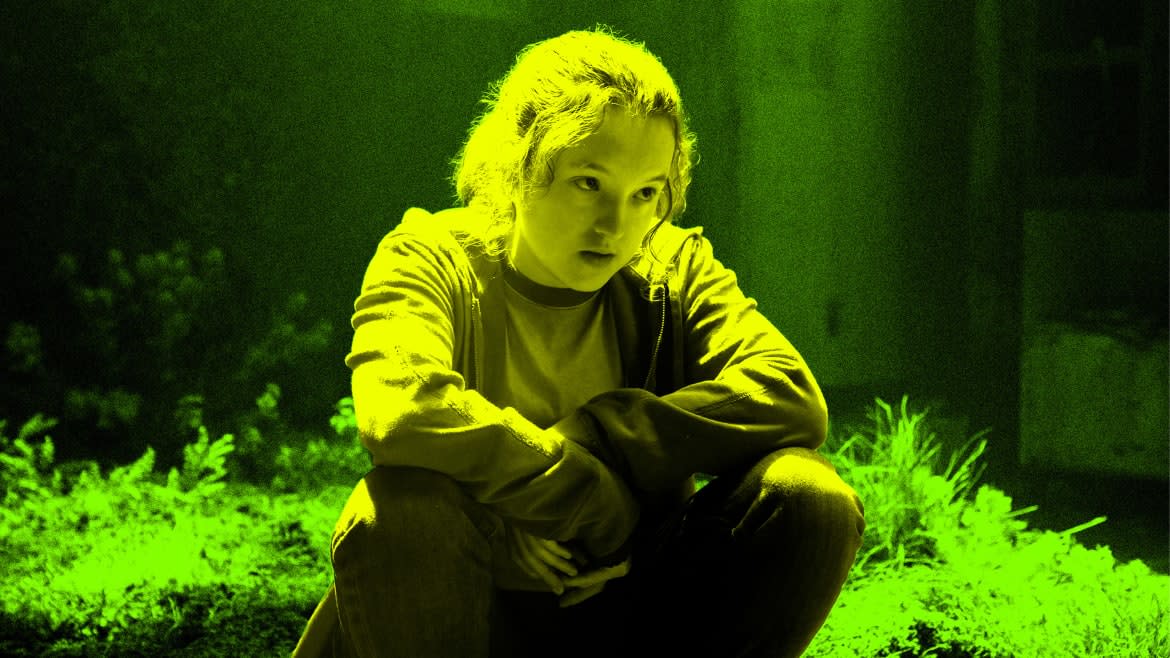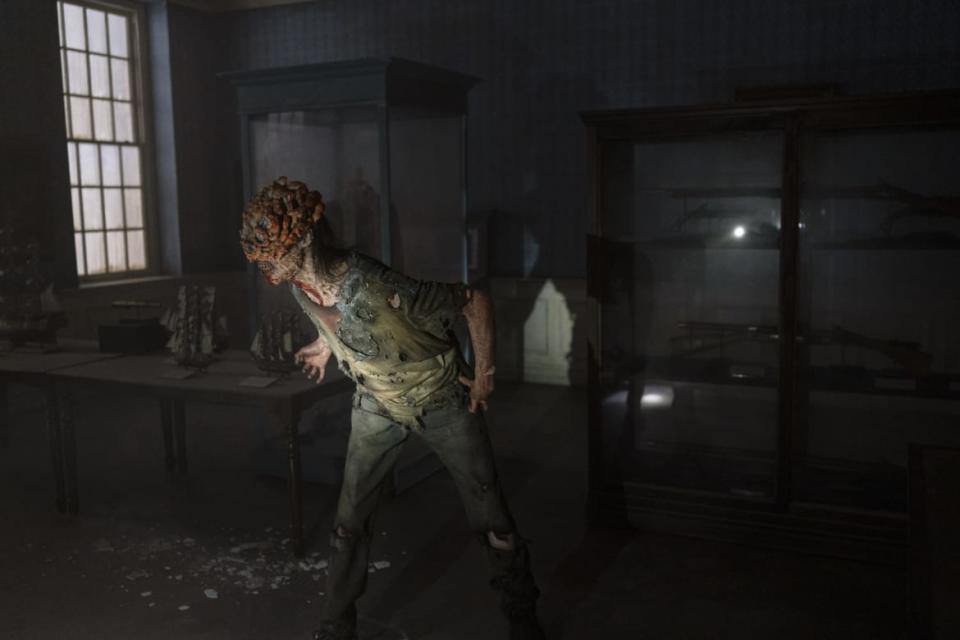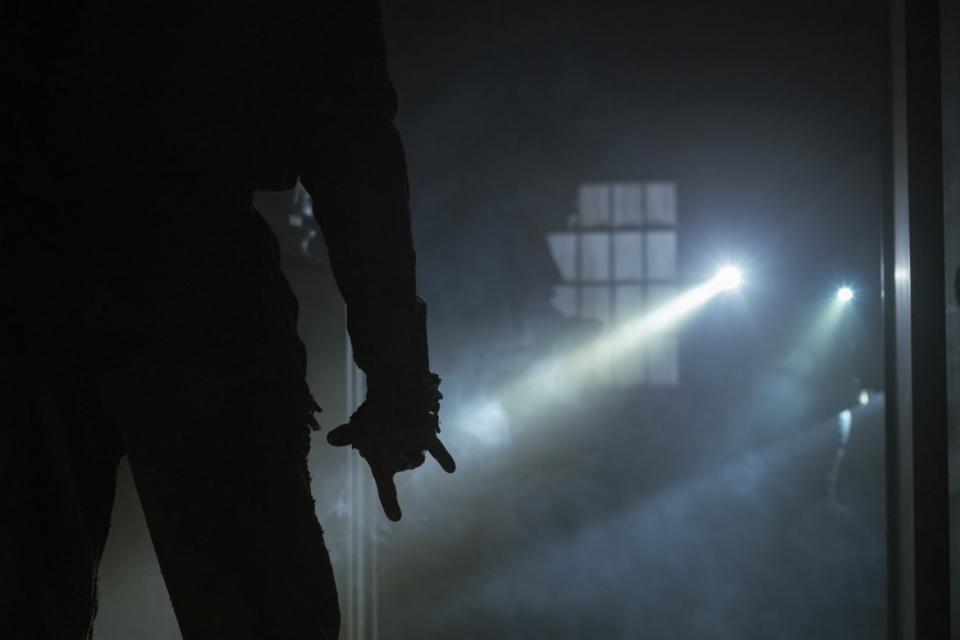‘The Last of Us’ Perfectly Remade the Game’s Scariest Moment

- Oops!Something went wrong.Please try again later.
- Oops!Something went wrong.Please try again later.
- Oops!Something went wrong.Please try again later.
Something you’ve probably already heard: The Last of Us is really, really good. And yet, I’m going to say it again: The Last of Us is freaking fantastic! It’s a massive apocalyptic epic told on a small scale—grizzled Joel (Pedro Pascal) is tasked with escorting precocious teenager Ellie (Bella Ramsey) through a nightmarish America. A fungal infection has gripped the world in unspeakable ways, with those who have been infected now roaming the streets with one goal on their mind: spreading the infection further. It’s emotional, hugely impactful, action-packed, and sure to be one of the best shows of the year.
And it’s all based on a video game. That’s normally the kind of thing that sends off alarms. But The Last of Us is proud of where it comes from. Plenty of shots and lines of dialogue are ripped directly from the 2013 PlayStation game, which is no surprise, since its creator and writer, Neil Druckmann, co-created the series. The Last of Us embraces its roots as a video game, combining storytelling and staging elements that feel distinctly game-y with expressive cinematic camerawork, all to create an unforgettable experience.
‘The Last of Us’ Shocks With First Surprise Death of the Season
The show's success is notable considering the stigma around adapting video games. These console-to-big/small screen takes can be low-quality “bad,” or rabid fandoms disapprove, or some critics continue to hold the medium as “less than.” But while there’s been a lot of talk about how The Last of Us breaks the video game adaptation curse, that curse has actually been gone for some time now. Sure, movies like Street Fighter: The Legend of Chun-Li, Bloodrayne, and Postal exist, and there’s nothing we can do about that. But films like 2018’s Tomb Raider and shows like Netflix’s Castlevania and Arcane have proven that there are plenty of great stories to be lifted straight off the consoles.
This is best exemplified through a stand-out sequence from The Last of Us’ second episode, directed by Druckmann, which aired this past Sunday. The moment takes place in a museum—Last of Us players, you know the one.
It’s home to one of the best—and most terrifying—levels in the entire game. The museum is home to some creepy scenery, but it’s also home to the clickers. As if the “normal” infected people weren’t disgusting enough, clickers are late-stage infected that have gone through such severe infection that they look anything but human from the neck up. Their faces kind of look like exploded fungus.
These things are disgusting, and worse, they’re far stronger than regular Infected. If they get too close, death is all but certain. There’s only one advantage to encountering clickers, and it’s that they’re blind (of course they are, their faces are exploded fungus! Their eyes but a distant memory). You can shine a flashlight on their face, and they won’t even flinch. Theoretically, you can sneak past them if you’re quiet and lucky enough. Except for the fact that their sense of hearing is heightened. Why can’t sneaking through a zombie apocalypse ever be easy?
That’s the motivation for Joel, Ellie, and Tess (Anna Torv) as they make their way through the dreaded museum. With no other viable route, the trio trudges through the museum, in the hopes that they can avoid a fight. But what’s the fun in that?
‘The Last of Us’ Easter Eggs: Every Reference You Might Have Missed
In the video game, there’s a distinct ability Joel (the player character) has: listen mode. At the press of a button, Joel can activate his heightened sense of hearing and spatial awareness, which allows him to see clickers and other Infected through walls, conveniently outlining them in white. That makes the player's journey easier, if not effortless. It’s embarrassing to think of just how many times I died in the first clicker encounter, accidentally making too much noise or missing vital headshots before getting my flesh torn apart. But in video games, there’s a glorious opportunity to try again.
The ascent up the museum staircase in the episode perfectly replicates the dreaded slow walk I experienced countless times while playing The Last of Us. The camera is placed right behind Joel, perfectly replicating the third-person shooter mechanics of the game. One wrong step could set off an entire horde of flesh-thirsty clickers, a fear the actors’ performances evoke. It’s a lot more than a winking reference—it aligns our eyes with Joel and lets us know that things are about to get heated.
As they walk up, Ellie steps on a long-dead hand, causing the trio to stop dead in their tracks, breath silent. It immediately threw me back to the game, where I’d try to control my shaking hands to prevent them from touching any buttons that could make noise and alert the clickers. It’s a false alarm, so they continue into Independence Hall, where things are about to kick off, whether they like it or not (they don’t).

The room appears empty at first, but as the gang gets through the door, the building heaves under its own weight, and the ceiling caves in, creating a barrier: there’s no turning back. It’s creepy, and a perfect nod to video games, where inexplicable and ill-timed blockages often prevent players from going backward.
Then the sounds pour in—that heinous clicking. The noise sounds identical to that in the game, and creates the same blood-curdling effect. The camera does things that it can’t do while you’re playing, cutting between different characters' faces, and seeing their absolute terror does great work in building the atmosphere. It’s thrilling to watch video games and cinema collide in the heat of a great action sequence.
The editing and camerawork are able to weave everyone’s experiences together, amplifying a sequence from the game that had a limited perspective by the nature of the medium. Quick, sharp cuts are crucial to building tension, and we understand where everyone is, even when we can’t see them. I couldn’t hear some parts because my heart was pounding so loud, but the sound design has the same attention to detail in the game that makes everything feel so threatening.

Eventually, after fending off the clickers, our heroes saved by gunfire—but another clicker comes running towards them. Tess jams an axe into its head. That’s not enough, as it continues barreling around, but it gives Joel just enough time to aim and fire two thoughtfully placed shots into its head, killing it. That gives them the chance to escape the hellish museum and continue their perilous journey. The camera perfectly reflects the third-person shooter in this moment, ending the sequence with a shot that synthesizes video games and television perfectly.
The museum sequence is furious, frightening, intense, and absolutely thrilling to watch. And by leaning into the gamey aspects of the source, The Last of Us creates the perfect, terrifying action sequence.
Get the Daily Beast's biggest scoops and scandals delivered right to your inbox. Sign up now.
Stay informed and gain unlimited access to the Daily Beast's unmatched reporting. Subscribe now.

